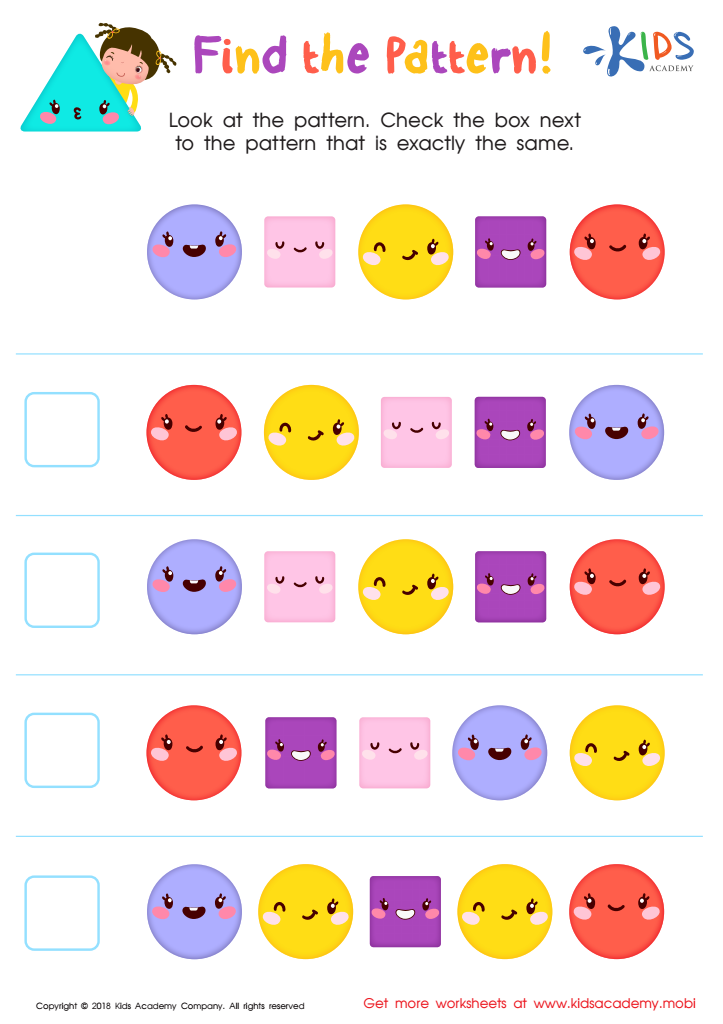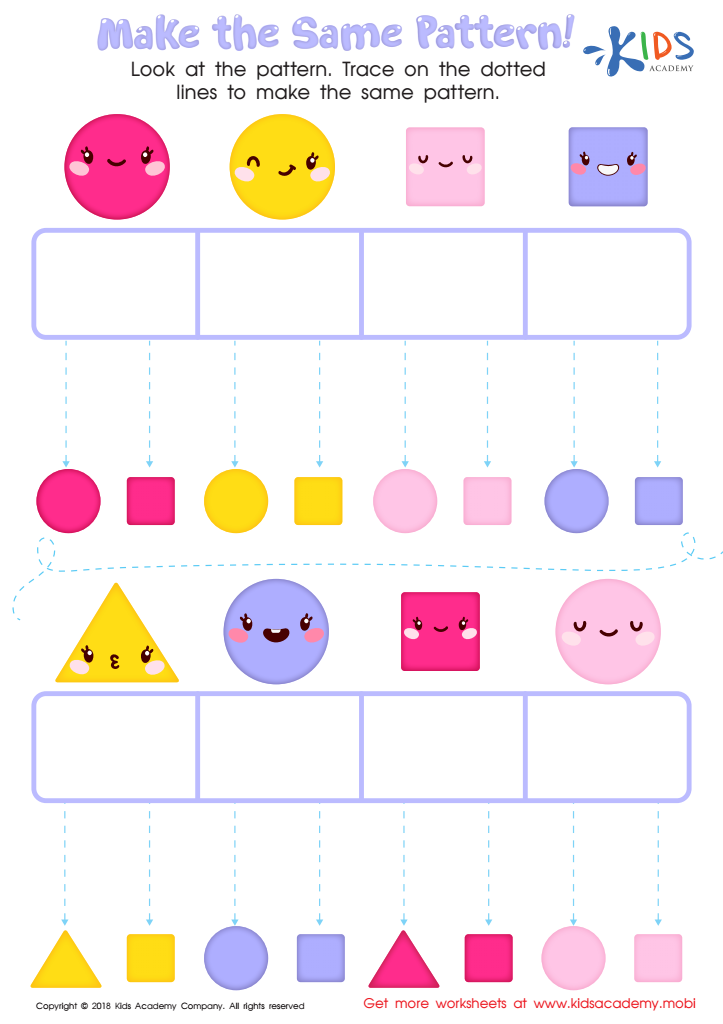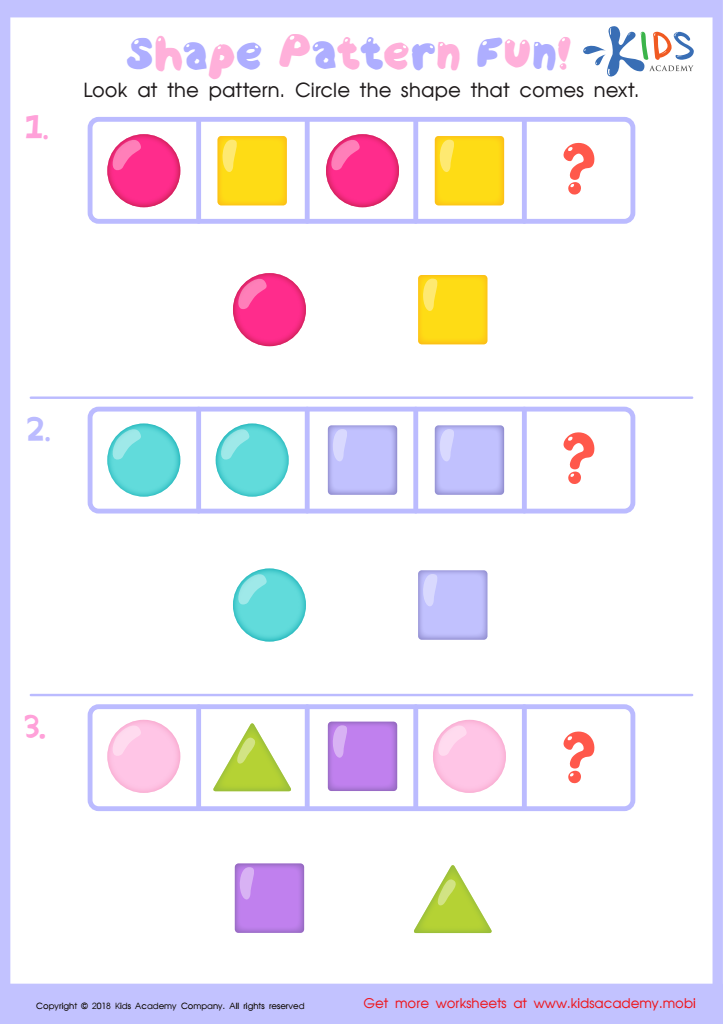Pattern recognition Normal Geometry Worksheets for Ages 3-7
3 filtered results
-
From - To
Discover the joy of learning with our "Pattern Recognition Normal Geometry Worksheets" designed for young learners aged 3-7! Our interactive and engaging worksheets help children develop essential pattern recognition skills while enhancing their understanding of basic geometric shapes. Each worksheet is thoughtfully crafted to promote critical thinking and problem-solving abilities through fun and colorful activities. Ideal for homeschooling or classroom use, these worksheets offer an enjoyable way for children to explore and identify patterns in various geometrical contexts. Encourage a love for math in your little ones and watch their confidence soar with our easy-to-use, educational resources!


Find the Pattern Worksheet


Make the Same Pattern Worksheet


Shape Pattern Fun Worksheet
Parents and teachers should care about pattern recognition and normal geometry for children aged 3-7 because these skills form the foundation for critical thinking and problem-solving throughout a child's education. At this developmental stage, children are naturally curious and eager to explore their environment; engaging with patterns and geometric concepts enhances this inquisitiveness.
Pattern recognition helps children to identify relationships and predict outcomes, skills that are essential for mathematical understanding later on. It encourages logical reasoning, enabling children to solve problems and make sense of the world around them. Geometric concepts introduce children to spatial awareness and visual discrimination, which are crucial not just in mathematics, but across various subjects including science, art, and even literacy.
Moreover, exposure to these concepts fosters creativity and boosts confidence in tackling complex tasks as they grow. Incorporating pattern recognition and geometry into play-based learning activities makes these abstract concepts accessible and enjoyable. Ultimately, nurturing these foundational skills in early childhood can lead to more advanced cognitive abilities in later schooling, encouraging a lifelong love for learning and exploration. Investing time and resources in these areas prepares children for future challenges, both academically and in real-world situations.
 Assign to My Students
Assign to My Students






























